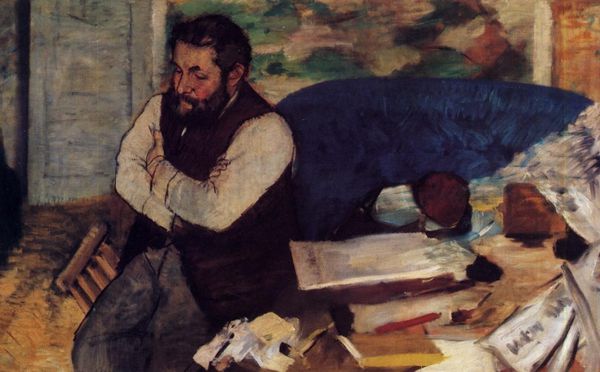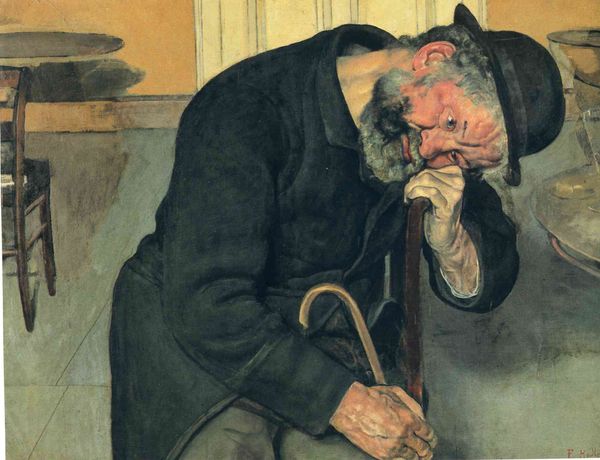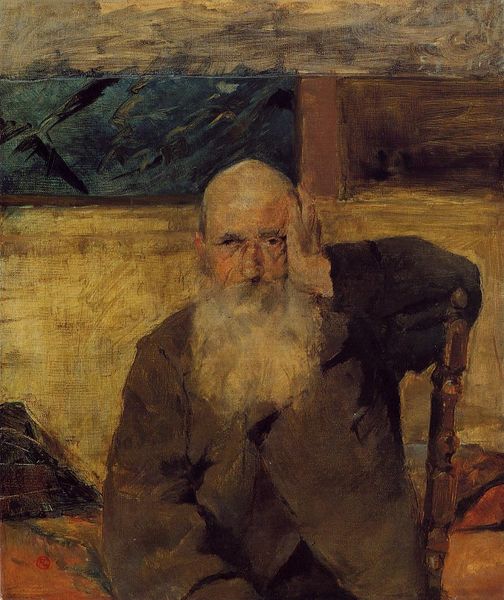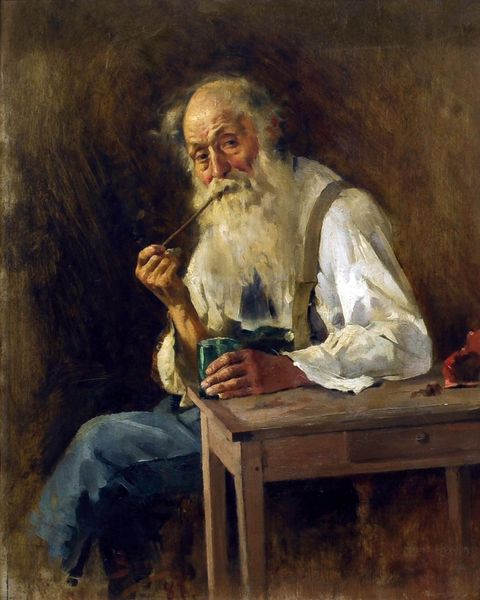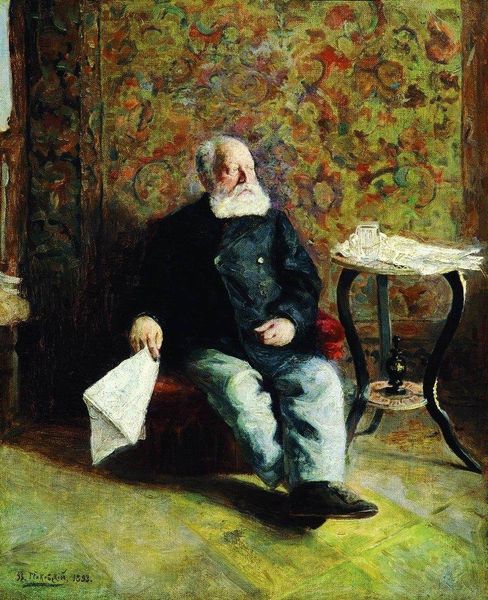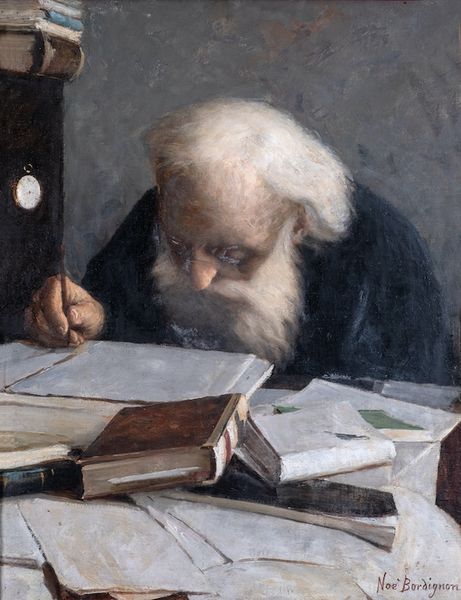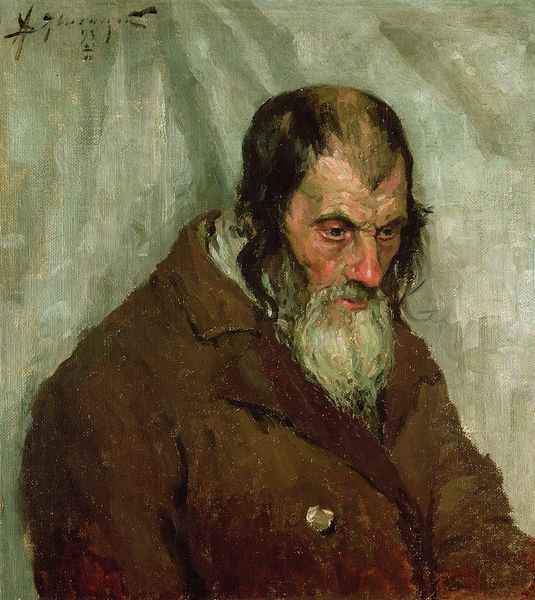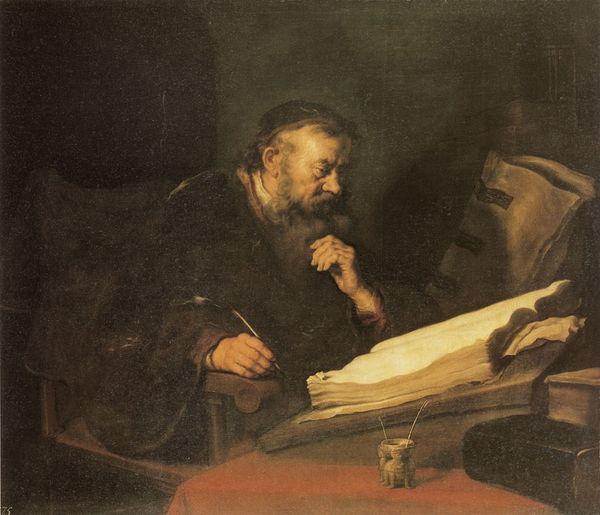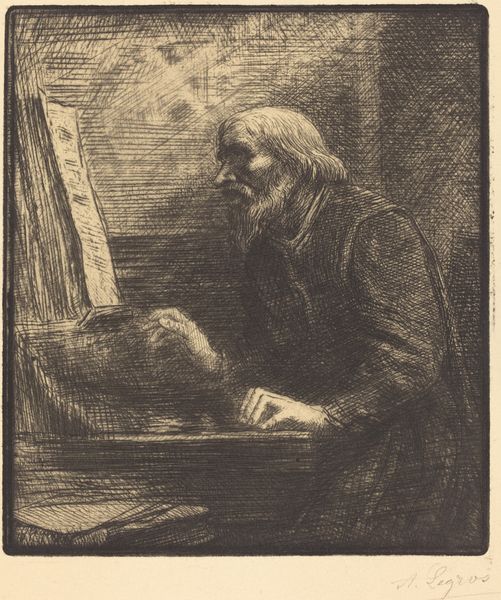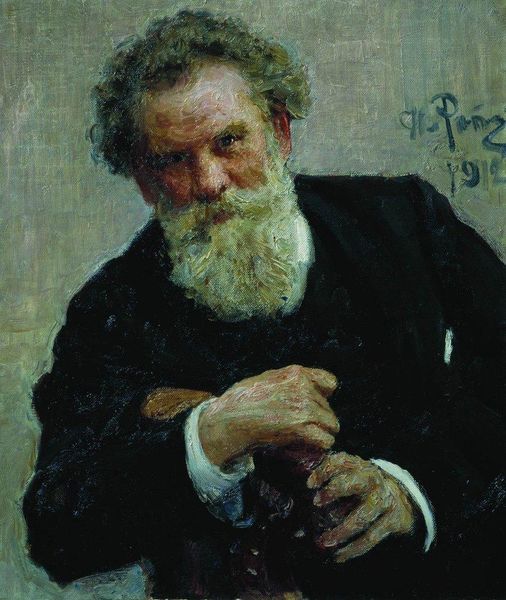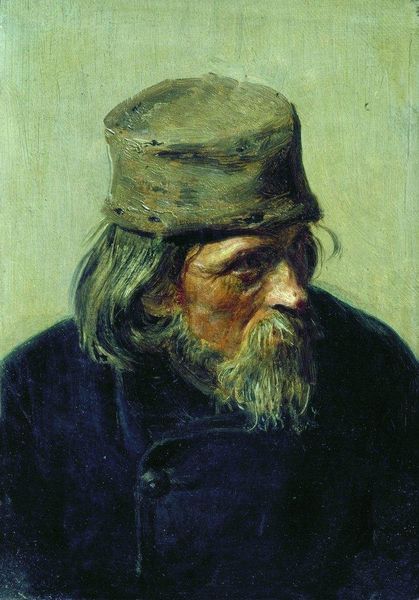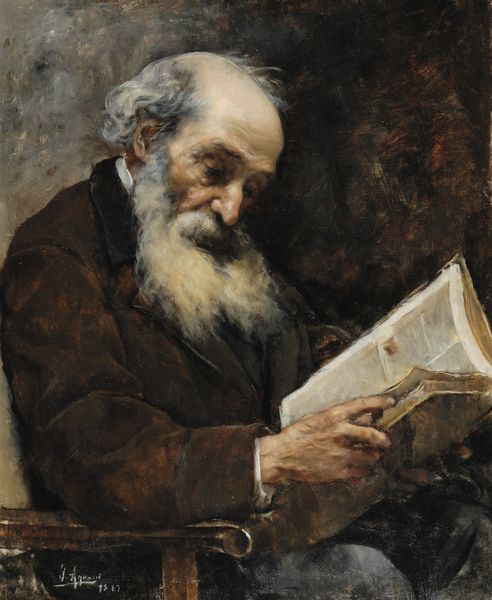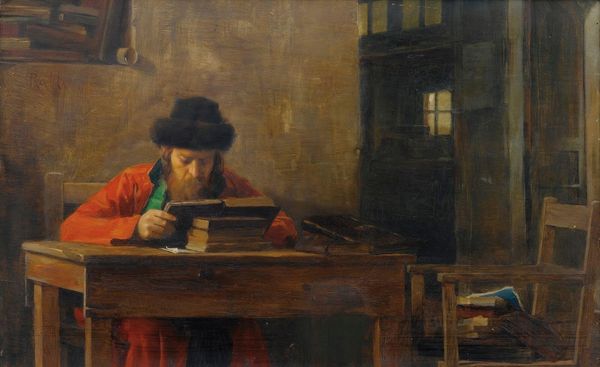
painting, oil-paint
#
portrait
#
painting
#
oil-paint
#
oil painting
#
portrait reference
#
genre-painting
#
naturalism
#
realism
Dimensions: 36.5 x 47 cm
Copyright: Public domain
Curator: Welcome. Here we have Anna Ancher’s intimate oil painting titled, “A Man Mending Socks.” Editor: Immediately, there's a sense of quiet dignity. The warm light, the focused posture... it feels deeply personal, almost voyeuristic, but in a tender way. Curator: Ancher painted many scenes of domestic life in Skagen, Denmark. Skagen was a fishing village that became an artist colony, and her works provide a window into the daily lives of its inhabitants. Editor: The image speaks volumes about labor, domesticity, and perhaps even aging. Notice the worn hands, the meticulousness of the mending. It hints at resourcefulness born out of necessity, doesn't it? How things were valued and repaired rather than replaced. Curator: Precisely. The historical context is important here. Consider the late 19th century: rapidly industrializing Europe, but in these smaller communities, older ways persisted. This act of mending wasn’t just practical; it represented a resistance to a throwaway culture that was just emerging. Editor: Absolutely. And think about the gendered aspect. While we often see women associated with mending, here we have a man engaged in what might traditionally be viewed as "women's work". Is Ancher making a subtle commentary on gender roles within the Skagen community? Is there also commentary on the traditional family that the artist witnesses as changing? Curator: It's an intriguing question, and perhaps she is challenging expectations, as it certainly opens dialogue between how work was traditionally categorized by sex, race, age and other means in small, rural communities. Anna Ancher herself was in many ways challenging societal expectations. Though embraced by many in the Skagen colony, she fought for recognition in a male-dominated art world. Editor: Ancher shows how daily labor contributes to discussions of human agency in art, as the composition directs our attention toward appreciating working-class tasks, offering an unexpected, radical perspective on labor, which provides historical, intellectual, and ideological connections to broader historical contexts and meaning. This allows viewers to consider themes about human effort, gender expectations, and historical perspective of that time. Curator: Indeed, these glimpses into the routines of working families, now contextualized through current issues, serve as valuable lessons about our values today. Editor: I leave here reflecting on how everyday acts, like mending, are so potent with meaning.
Comments
No comments
Be the first to comment and join the conversation on the ultimate creative platform.
